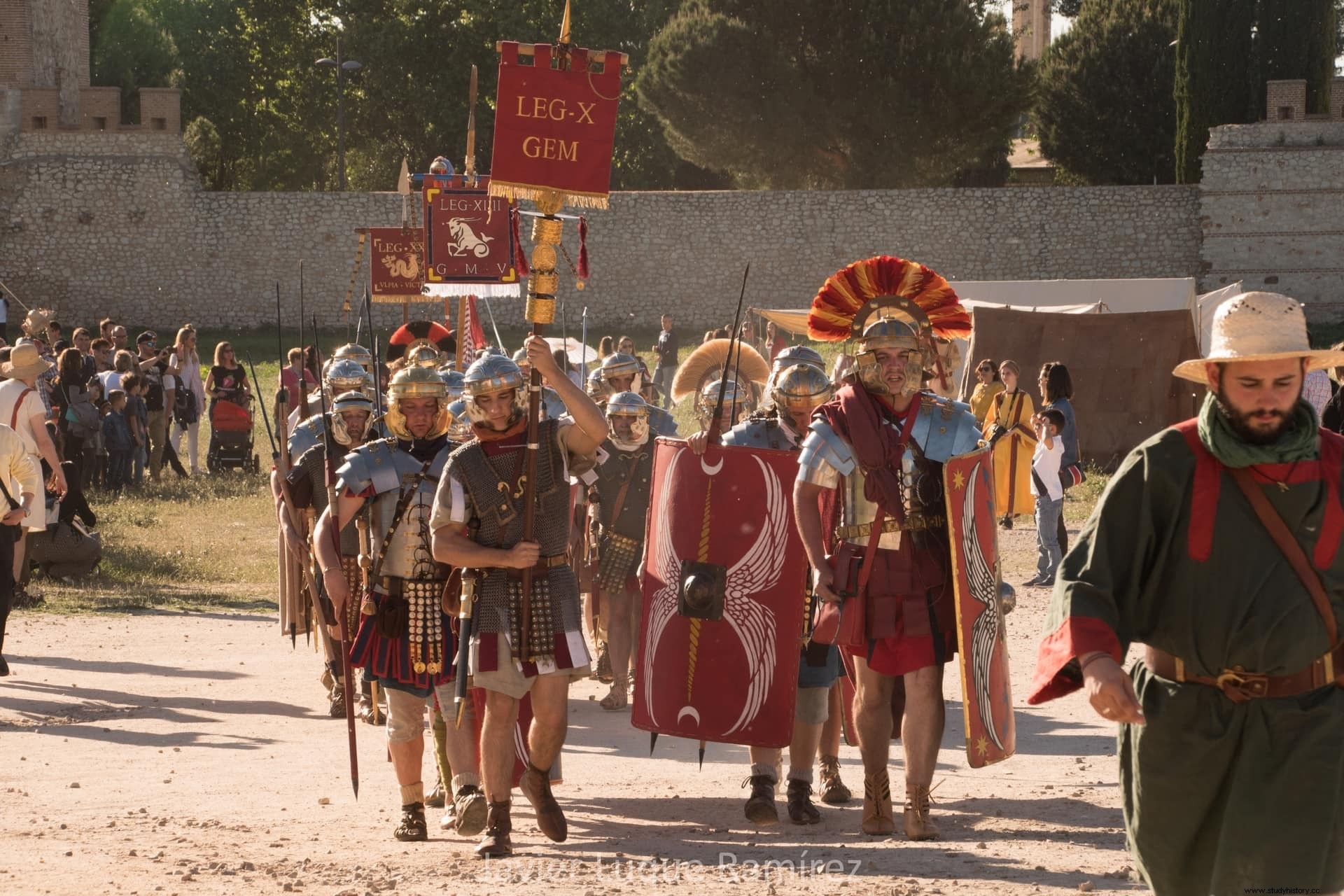Last May Bank Holiday, the first days of Roman historical recreation were held in the Madrid town of Alcalá de Henares under the name of “Complvtvm reborn, discover the city of the nymphs” , organized by the Ab Urbe Condita Cultural Association in collaboration with the Regional Archaeological Museum Store. Throughout the weekend various activities were carried out to bring the Roman past closer to its inhabitants in a framework that spanned from the 1st to the 5th century of our era. As its name indicates, this event aimed to enhance the historical heritage of the city of Complutum, a city founded in the 1st century AD and which appears in the Antonine Itinerary, on which the current city of Complutum is based. Alcala de Henares. These days were attended by seven groups of Roman historical recreation that try to revive both the inhabitants and the military units stationed in Hispania such as the Leg. X Gemina, XXX Ulpia, Ascanii Seniores, V Baetica Vexillatio or the Cohors I Celtiberorum.
Although the historical reenactment or reenactment is a phenomenon already familiar to many of the readers, we see it necessary to emphasize one of its main foundations:historical dissemination. A priori, the most immediate end of the Roman historical re-enactment is to reconstruct with the greatest degree of fidelity possible the characters of a given time and context, which gives rise to a great variety of groups and events oriented to different periods of the history of Rome. This is possible through research on primary and secondary sources, which must materialize in the making of a team that fits the chosen context to recreate. The result of this arouses great interest in the public by being able to visualize, in a direct way, panoplies, outfits or trousseaus typical of a character from another era.

Hence, historical re-enactment is presented as a dissemination tool very useful as. The close treatment of the reenactors with the public, as well as the displays or stagings with material "from Roman times" that to contemplate first hand, allows us to approach the past in a pleasant and playful but rigorous way. Also, including groups that recreate different times of the Roman Empire allows to create a vision of evolution or set for the spectators. The goal of Roman historical re-enactment is therefore to arouse public interest in the history of Rome and the cultural heritage that we have inherited. Objective that Complvtvm Renacida seemed to achieve in the activities carried out there due to the involvement shown by the inhabitants of Alcalá de Henares, the City Council and the Roman historical reenactment groups that attended.

The most outstanding element of this class of events is, in general, the establishment of a camp around which most activities are articulated. Unlike other times, in the Roman historical re-enactment the military camp or castrum is separated of the civilian or canaba in order to conform to the layout that appears in the sources. This was established in the Huerta del Obispo, which turned out to be an unbeatable space for an activity of these characteristics as it is far from 21st century elements that would make immersion difficult. The camp, open to the public for most of the day, was characterized by the performance of different daily chores by the reenactors, as well as various acts by the legions that allowed the public to attend military training> and explanations about the military equipment of the Upper and Lower Empire.


One of the components that is often left out in historical reenactment is that of civilians, who remain in the background compared to military reenactment, which is much more widespread. We often find that in Roman historical recreation, as in most times, these play a secondary or even residual role. In Complutum Renacida they wanted to give a relevant role to civil recreation , also giving visibility to the popular layers of society by embodying the members of the canaba. Similarly, activities such as a sale of slaves and an explanation of Roman women were carried out, explaining the lives of figures often silenced in the sources.

The religious element was also present with the celebration of a cult of Isis revealing one of the most widespread cults during the low empire in Hispania. Linked to the military field, a consecration of the banners of the legions was also carried out, with the consequent swearing of fidelity by the legionnaires to the ensigns and to the emperor.

Another aspect that was treated is that of leisure in Rome. Through an explanatory talk, followed by a fencing exhibition, the different types of gladiators and the context surrounding one of the most popular shows of antiquity were shown. On the other hand, the archaeological remains of the house of Hippolytus were a privileged setting for re-enactors, who emulated a Roman hunt. One of the most valued entertainment by the Hispanic elites of the late empire.

The first days of Roman historical re-enactment in Alcalá de Henares seem to have been a success. For a weekend, the city remembered its Roman past thanks to the involvement of the hundreds of people who attended the different activities, as well as the predisposition of the City Council to celebrate this event. The collaboration between the groups created an atmosphere of friendship typical of those who, non-profit and, in a vocational way, enjoy a common hobby. Elements conducive to growth and setting a precedent for Roman historical recreation in the Community of Madrid.
